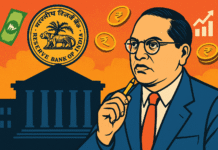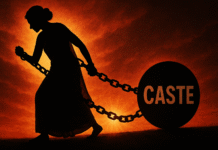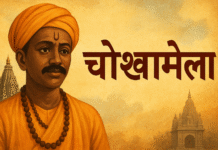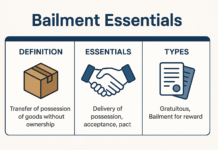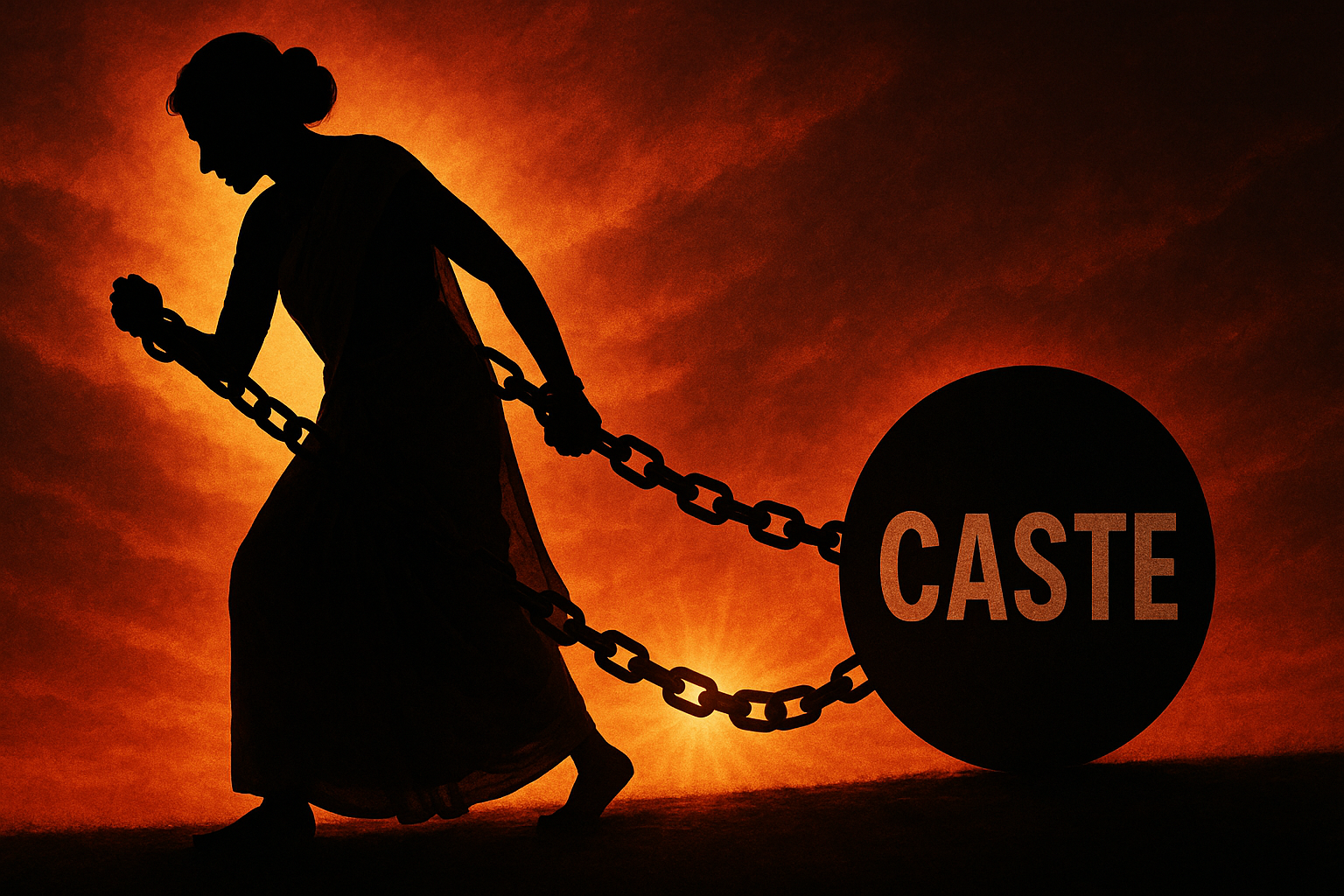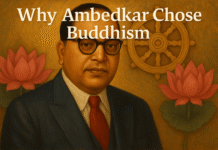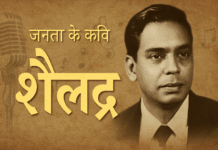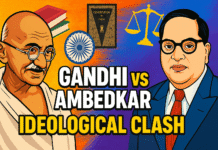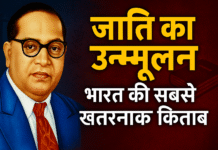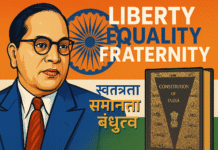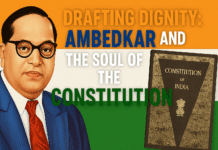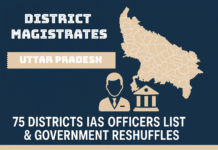Women as the Primary Bearers of Caste Burden in India: Transmission, Societal Expectations, and the Threat to Caste Boundaries
In India, the caste system is not simply a social order but a deeply embodied, gendered, and generational project, intricately sustained through the lives and bodies of women. While caste stratification appears at once timeless and omnipresent, its persistence hinges crucially on the policing and regulation of women by families, communities, and the state. Women not only symbolize caste purity but, through specific expectations and restrictions—especially around marriage—are caste as the linchpins of endogamy and the biological and cultural transmission of caste. The threat posed by women’s transgression of these boundaries is perceived as existential, and it is often with lethal force—such as honor killings—that families and communities work to enforce these dividing lines. Historically rooted, yet vibrantly contemporary, these dynamics have drawn the scrutiny of sociologists, anthropologists, and feminists alike, prompting critical questions: Why are women made the primary bearers of caste? How is caste reproduced through marriage and kinship practices? Why might women themselves not fully recognize their distinctive position within these power structures, and what are the consequences when these structures are defied?
This comprehensive analysis explores these questions from multiple disciplinary lenses. It examines the intertwining of caste and gender, focusing on historical and ideological foundations, the mechanisms of caste transmission via women, the cultural and psychological internalization of caste norms, and the violent maintenance of purity, particularly through honor killings. The report pays particular attention to empirical realities—legal frameworks, contemporary case studies, demographic trends, and feminist interventions—while reflecting on the transformative potential inherent in women’s agency, particularly through inter-caste marriage.
Sociological Theories on Caste-Gender Intersection
Social science offers a spectrum of frameworks for analyzing the caste-gender nexus in India. Functionalist, conflict, and symbolic interactionist paradigms, among others, each highlight unique mechanisms by which women become the key bearers and enforcers of caste boundaries.
Table: Key Sociological Theories Interpreting Caste and Gender Roles
| Theory/Framework | Core Premise | Interpretation of Caste-Gender Dynamic | Key Proponents |
|---|---|---|---|
| Structural-Functionalism | Society functions as an organism with roles; endogamy preserves order | Women’s regulation ensures caste purity and continuity; deviation = dysfunction | M.N. Srinivas, Talcott Parsons |
| Symbolic Interactionism | Social roles and meanings created through everyday interactions | Purity, pollution, and honor symbolically imposed on women; rituals reinforce roles | Erving Goffman, Harold Garfinkel |
| Conflict Theory | Social hierarchies maintained via power and coercion | Control over women’s sexuality and labor sustains dominant caste power | B.R. Ambedkar, Karl Marx |
| Intersectional Feminism | Oppressions (caste, gender, class) intersect, compounding marginalization | Downtrodden (Dalit) women face unique triple oppression; focus on agency and lived experience | Kimberlé Crenshaw, Sharmila Rege |
| Anthropological Kinship Theory | Descent, marriage, and kinship as structuring social order | Women’s marriages and reproductive roles are principal sites of caste reproduction | Irawati Karve, Louis Dumont |
Theories such as structural-functionalism rationalize women’s roles as mechanisms for maintaining caste stability: rules of caste endogamy and ritual purity (enforced through women’s behavior) become essential for societal equilibrium. Conflict theory starkly foregrounds power: patriarchy and caste intersect to deny women autonomy and uphold dominant group interests, often enforced violently. Symbolic interactionists stress everyday practices—the meanings given to purity, honor, and pollution are ritually enacted through women’s bodies and conduct, especially in food, clothing, and marital arrangements. Intersectional theorists and Downtrodden (Dalit) feminists add complexity, arguing that neither caste nor gender can be analyzed in isolation, and that Downtrodden (Dalit) women are uniquely marginalized at this intersection, facing forms of violence invisible in either mainstream feminism or anti-caste activism.
Historical and Anthropological Roots: Caste Transmission Through Women
Origins and Evolution of Caste Endogamy
The central role of endogamy to caste reproduction in India is underlined by both historical and genetic research. The regulation of marriage within caste groups—a practice dating back over two millennia—became a cornerstone of caste isolation after an initial period of inter-group mingling. As studies have shown, “from around 1900 years onwards, several subgroups of the already mixed population stopped marrying outside their group, and thus became frozen”. This hardening of endogamy, and concomitant “purity and pollution” rules, took place parallel to the rise of ritual Hinduism, embedding the purity of lineages as a religious and social ideal.
Anthropologists like Irawati Karve and Louis Dumont have extensively documented how this is enacted through the control over women: women’s kinship, reproductive, and ritual roles, above all in marriage and childbirth, are regulated to ensure caste continuity. Women’s movements in and out of caste groups (via marriage or childbirth) threaten lineage stability, so society responds with mechanisms—customs, prohibitions, and surveillance—designed to forestall such “pollution” or admixture. Patriarchal authority thus intersects with caste to restrict women’s choices, often under the guise of protecting family or community honor.
Rituals and Cultural Mechanisms of Transmission
Women’s responsibilities for upholding rituals relating to food, menstruation, childbirth, and daily worship further entrench their roles as utterers and enforcers of caste boundaries. Rituals such as mundan (head-shaving), upanayanam (sacred thread ceremony), and numerous marks of purity are conducted with scrupulous attention to the caste status of women involved, prescribing who may participate, who can touch whom, and who can share food. These ritual distinctions are both a sign of caste segregation and a means of its reproduction, with the onus falling particularly on women.
Anthropological studies have highlighted that in some communities, the concept of stridharma (the religious duty of women) is rigorously policed to ensure adherence to these customs. Violations are considered not merely a personal failing but a community transgression, triggering social sanctions, ostracism, or violence.
Societal Expectations: Purity, Honor, and Gendered Control
The Burial of Honor in Women
The gendered logic of honor and purity is at its sharpest in the context of women’s sexuality, marriage, and reproduction. The honor of a family—and, by extension, the community or caste group—is inextricably tied to the perceived sexual purity, obedience, and conformity of its women. The consequences of challenging this link are severe: transgressions (real or perceived) can result in stigma, excommunication, forced divorce, or even death (as evidenced in the persistence of honor killings).
Studies by the Pew Research Center document how traditional roles for women remain dominant in Indian households, with overwhelming proportions agreeing that “a wife must always obey her husband,” and sons being granted greater rights and responsibilities even as the legal landscape moves toward equality. The contradiction between women’s public legal rights and private subordination within caste-based patriarchal families persists across rural and urban India.
Internalized Gender and Caste Roles
Gendered socialization begins early and is both explicit (through rituals, instructions, and prohibitions) and implicit (through observation, everyday practice, and the internalization of norms). Women are often tasked with transmitting stories, behaviors, and attitudes that reinforce both caste and gender hierarchies to the next generation, typically without explicit awareness of the historical and ideological mechanisms at play. For many, these roles—while restrictive—are experienced as responsibilities linked to family, tradition, or religious piety, rather than oppression.
This internalization is critical in sustaining the system. As researchers note, women are frequently socialized to equate their own value with the honor and status of their families, leading to the policing of their own and others’ behavior. This psychological dynamic—described by some as “symbolic violence”—makes the enforcement of caste not only a matter of external coercion but also of self-surveillance and mutual reinforcement among women themselves.
Caste Endogamy and the Policing of Women’s Marriage Choices
The Centrality of Marriage in Caste Reproduction
Marriage in India is often characterized as the “linchpin” of caste reproduction. Endogamy, or marrying within one’s own caste (and often sub-caste), is not merely a preference—it is an obligation enshrined in custom, kinship strategies, ritual, and the legal codes of Hindu society for centuries. Matrimonial alliances are carefully negotiated, with women’s consent often subordinated to familial and caste interests.
Scholars such as B.R. Ambedkar have long argued that “endogamy is the only means of preserving caste,” and that any significant erosion of women’s endogamous practices would unravel the very fabric of caste society. The threat posed by inter-caste union is therefore not merely to family honor but to the system itself.
Mechanisms of Enforcement: Arranged Marriage, Ritual, and Community Surveillance
Though India has undergone processes of modernization, urbanization, and legal reform, arranged marriages—anchored in caste and family networks—remain overwhelmingly dominant. The India Human Development Survey reports that only about 5% of marriages are inter-caste, a proportion virtually unchanged over the last decade. Women, especially, are subject to stricter scrutiny: contraceptive choices, education, choice of partner, and movement outside the home may all become arenas of control and negotiation, with “dishonor” invoked to deter deviation.
Families, often abetted by khap panchayats (village councils) and wider community networks, monitor and intervene in women’s lives, using social sanction, ostracism, and—at the extremes—coercion or honor killings to enforce boundaries.
Cultural and Media Narratives
Media and films, while at times providing progressive narratives, often reinforce these traditional expectations, portraying women who challenge endogamy as “polluted,” dangerous, or tragic. Simultaneously, online spaces have emerged as battlegrounds for opposing narratives, sometimes escalating the intensity of backlash as communities mobilize to defend perceived insults to caste honor.
Honor Killings: Violent Enforcement of Caste Boundaries
Patterns and Prevalence
Honor killings—murders committed by family or community members against individuals (disproportionately women) who are seen to have transgressed caste boundaries through love affairs or marriages—represent an extreme, though not rare, manifestation of caste-gender policing. The National Crime Records Bureau recorded a rise in honor killings in India in the early 2020s, with states such as Tamil Nadu, Telangana, Maharashtra, and Kerala, where Downtrodden (Dalit) empowerment and inter-caste marriages are more common, experiencing higher rates of such crimes.
Socio-Legal Context
Despite constitutional guarantees (Articles 14, 15, 19, and 21) and legal protections (notably, the Special Marriage Act, 1954), the perpetrators of honor killings often evade justice due to the complicity of families, communities, and even elements of law enforcement. Certain khap panchayats have actively encouraged violence against inter-caste couples, despite Supreme Court rulings denouncing their interference and actions as illegal.
Legal and policy frameworks—such as the Special Marriage Act, the Hindu Marriage Act, and judgments in cases like Lata Singh vs. State of U.P. and Shakti Vahini vs. Union of India—attempt to safeguard individual rights. However, implementation remains weak, with societal norms and community pressures often overwhelming legal recourse.
Feminist Analyses and Case Studies
Feminist scholars argue that honor killings are not isolated crimes but are structurally endemic to the caste-patriarchal order: they represent its defense mechanism in the face of threats posed by women’s individual choice and romantic autonomy. High-profile cases—such as the 2018 murder of Downtrodden (Dalit) man Pranay Perumalla in Telangana—underscore the intertwining of caste and gender violence, as well as the continued willingness of families to sacrifice their daughters’ (and their victims’) lives to preserve this system.
Stories abound of women who are murdered, excommunicated, or driven to suicide for marrying outside their caste, with the violence justified as necessary to cleanse dishonor and prevent contagion. The disproportionate targeting of women (as opposed to men) in these acts is a testament to their centrality to caste reproduction and policing.
Women’s Self-Awareness and Psychological Internalization of Caste Status
The “Invisible” Burden
Despite their central role in transmitting and enforcing caste boundaries, many women do not recognize the full scope or social weight of their position within the caste hierarchy. This “invisibility” is partly induced by the deep internalization of cultural and religious narratives that frame their subordination as both natural and virtuous—including texts that define a woman’s duty (dharma) as one of self-sacrifice, obedience, and upholding family honor. This pattern is further reinforced by limited access to education and narratives that criticize transgressive women as selfish, foolish, or even insane.
Psychological Consequences
Women subjected to the psychological burden of dual subordination—by caste and gender—often experience chronic low self-esteem, guilt, and anxiety, feeling responsible not only for their own reputations but also for the fates of entire families and communities. For downtrodden-caste women and Downtrodden (Dalit), this is compounded by exposure to stigma, discrimination, and sometimes explicit caste-based violence, leading to higher rates of psychological distress and trauma.
The enforcement of obedience and purity can promote a cycle of internalized oppression, with women sometimes enforcing norms against one another—whether through sarpanch decisions, in-laws’ surveillance, or maternal “cautionary tales” passed to daughters—thus becoming agents in their own subjugation, often without full awareness of the broader power structure this serves.
Intersectionality: Downtrodden (Dalit) Women and “Triple Oppression”
Specific Experiences of Downtrodden (Dalit) and Depress-Caste Women
The lived experience of caste for women is never uniform. Downtrodden (Dalit) women (as well as depress-caste women and Adivasis) experience what has been termed “triple oppression”—at the intersections of caste, gender, and often class. Their voices are frequently marginalized within both the mainstream feminist movement (which tends to center dominant-caste women) and within Downtrodden (Dalit) or anti-caste movements (which often center Downtrodden (Dalit) men).
Gopal Guru’s concept of “Dalit patriarchy” highlights the internalization of patriarchal values within Downtrodden (Dalit) communities themselves, producing a distinct form of gendered caste oppression. Downtrodden (Dalit) feminists such as Sharmila Rege and Bama have written of the need for a Downtrodden (Dalit) feminist standpoint, grounded in the lived realities and agency of Downtrodden (Dalit) women, and aimed at dismantling both patriarchal and caste-based oppression.
Vulnerability to Violence and Dispossession
Downtrodden (Dalit) women are not only targeted for enforcement of purity and honor within their own communities but are also uniquely vulnerable to sexual violence, economic deprivation, and public shaming by upper-caste groups, who weaponize perceptions of impurity as licenses for exploitation or abuse. Practices such as devadasi/jogini (temple prostitution) and systematic sexual assault in cases of land or social disputes are illustrative of how caste and gender violence interact.
Statistically, Downtrodden (Dalit) women have lower literacy rates, lower life expectancy, fewer economic opportunities, and higher rates of violence than either non-Dalit women or Downtrodden (Dalit) men, underscoring the necessity of intersectional perspectives in both activism and policy.
Contemporary Trends: The Threat and Promise of Inter-Caste Marriages
Resistance and Trends in Inter-Caste Marriage
The India Human Development Survey and other empirical studies have consistently found that inter-caste marriage remains extremely rare, at about 5% of all marriages, with slightly greater openness in certain urban and northeastern states. Where it does occur, it is often the result of independent mate selection facilitated by greater education, urbanization, and the breaking down of traditional familial controls—though even among the educated, caste remains a powerful influence on marital choice.
Remarkably, women’s participation in inter-caste marriage is both more likely when they have had the opportunity to form relationships independently of family arrangements, and yet, these unions tend to provoke the most intense social backlash, both because of the symbolic “loss” of caste purity and the potential disruption to the system as a whole.
Legal and Policy Interventions
While laws such as the Special Marriage Act (1954) and the Hindu Marriage Act (1955) legally facilitate inter-caste marriage, the dual realities of legal rights and social acceptance remain starkly divergent. The Special Marriage Act, though designed to protect against community interference, remains cumbersome in practice, often requiring public disclosure that leaves couples vulnerable to harassment or violence. Government schemes, such as the Ambedkar Scheme for Social Integration through Inter-Caste Marriages, offer some financial incentives but are hampered by lack of awareness, procedural hurdles, and continuing stigma.
Judicial interventions and Supreme Court verdicts have repeatedly affirmed individuals’ right to choose their partners, condemned khap panchayats, and mandated police protection in egregious cases. Yet, implementation is weak, and legal remedies are often inaccessible for those at greatest risk.
Cultural and Socio-Economic Barriers
Societal barriers—stigma, ostracization, and threats to safety—regularly outweigh legal protections, ensuring that inter-caste unions are exceptions rather than the rule. Even within marriages that cross caste lines, deeply ingrained caste privilege and bias can persist, subtly shaping power dynamics and reproducing elements of the very system the union disrupts.
Feminist and Downtrodden (Dalit) Feminist Responses: Challenging Caste Through Women’s Agency
Theoretical and Activist Interventions
Feminist theorists—and, crucially, Downtrodden (Dalit) feminists—have long argued for the inextricability of caste and gender. The 19th-century interventions of Jotiba and Savitribai Phule, the anti-Brahmin movements of Periyar, and the contemporary activism of Downtrodden (Dalit) women’s groups all highlight the necessity of centering women’s experiences and agency in both anti-caste and feminist struggles.
The Dalit Women’s Movement emerged as a direct challenge to the marginalization of Downtrodden (Dalit)) voices within mainstream feminism and anti-caste politics, asserting the need for a “Downtrodden (Dalit) feminist standpoint” and the centrality of lived experience, dissent, and collective agency in challenging systems of oppression.
Cultural Production and the Assertion of Subjectivity
Downtrodden (Dalit) women have increasingly used literature, autobiography, and performance to articulate resistance and agency—works such as Bama’s “Karukku”, Baby Kamble’s “The Prison We Broke”, and Urmila Pawar’s “The Weave of My Life” have become seminal texts in the articulation of “politics from below” and in making visible the specific intersectional violence faced by women in the caste system.
Breaking the Caste System: The Transformative Potential of Women’s Defiance
The proposition that the caste system would collapse if women were to marry outside their caste is not rhetorical exaggeration but sociological insight. If women—through independent choice and collective assertion—were widely to flout the norms of endogamy, both the structure of caste and the dynamics of patriarchal power over women would become unsustainable. This potential is recognized and feared by family and community networks, who respond with escalating moral panic, social control, and sometimes violence. It is also recognized by activists, feminists, and anti-caste reformers, who see in women’s agency the critical lever for systemic change.
Legal and Policy Frameworks: Achievements and Shortcomings
Legislative Protections and Judicial Precedents
Indian law—particularly through the Special Marriage Act (1954)—provides for civil marriage regardless of caste or religion, theoretically offering a pathway for those wishing to break with endogamous tradition. The Supreme Court has issued landmark judgments affirming the right to marry a partner of choice and condemning communal and familial violence (see Lata Singh vs. State of U.P., Shakti Vahini vs. Union of India, Vikas Yadav vs. State of U.P.). The law also criminalizes honor killings as murder and provides for prosecution under new and existing legal codes.
Enforcement Gaps and Social Obstacles
However, the implementation of these protections is deeply uneven. Law enforcement agencies are often complicit (actively or passively) in upholding community norms over constitutional rights. Couples seeking to marry outside their caste report harassment, bureaucratic hurdles, and lack of effective police protection. Community panchayats continue to wield de facto authority in many parts of India, sometimes openly defying both legal statutes and court orders.
Recent recommendations by the Law Commission and civil society include the introduction of specific anti-honor killing legislation, streamlined marriage registration procedures, safe houses for couples at risk, and police accountability measures—many of which have not yet been fully implemented.
The Problem of Social Acceptance
While legal change is necessary, social acceptance lags far behind. Surveys and studies document persistent resistance to inter-caste marriage and deeply entrenched ideas about purity, pollution, and honor. Educational and awareness campaigns, coupled with affirmative action and gender-justice policies, are critical to changing long-term attitudes, yet progress is incremental.
The Future: Toward Dismantling Caste and Centering Women’s Agency
Emerging Patterns and Hopeful Trends
While caste endogamy remains stubborn, some urban and youth subcultures display incipient shifts in attitudes, with increasing valorization of individual choice, autonomy, and emotional fulfillment over familial or communal obedience. Migrant populations, economic mobility, and digital media have opened limited but significant spaces for alternative imaginations and practices of kinship and love.
Importantly, feminist and Downtrodden (Dalit) movements, legal reforms, and (sometimes) popular culture have made the conversation about caste and gender multidimensional, forging solidarities and collective action across formerly isolated spheres.
The Challenge
Yet, as this article has traced, the burden placed upon women—as primary bearers of caste, purity, and honor—remains formidable. Undoing these structures will require not only legal, economic, and educational interventions, but a profound cultural transformation: one that centers women’s autonomy, acknowledges intersectional oppression, and consistently challenges the social and psychological mechanisms that produce and reproduce both caste and gender hierarchies at all levels of society.
Conclusion
Women’s position as the primary bearers of caste burden in India is both a site of profound oppression and a potential fulcrum for radical social change. As guardians of lineage, honor, ritual, and purity, they have been the pivotal keepers of caste boundaries—policed not only by external agents but through deep internalization of patriarchal and casteist norms. However, it is precisely in the dissolution of these boundaries—through inter-caste marriage, assertion of autonomy, and the articulation of Downtrodden (Dalit) feminist agency—that the edifice of caste may begin to crumble.
The struggle is ongoing, and the resilience of the system should not be underestimated. The path forward lies at the intersection of sociological, anthropological, and feminist insight, robust legal and policy reform, and the lived, resisting subjectivity of women themselves—particularly those historically pushed to society’s margins. If women’s agency in kinship and marriage were to be fully realized and supported, the system of caste, as it presently exists, could face its most decisive challenge yet.


